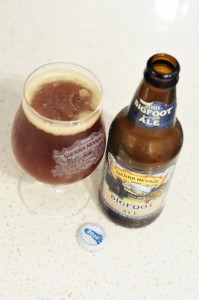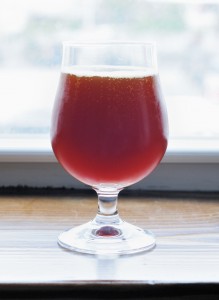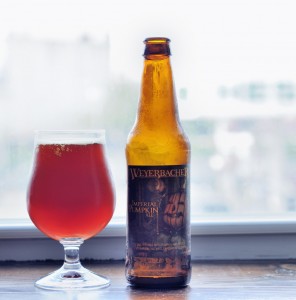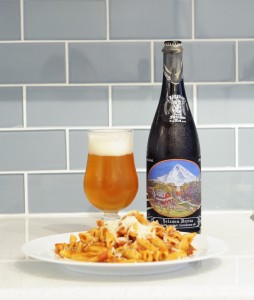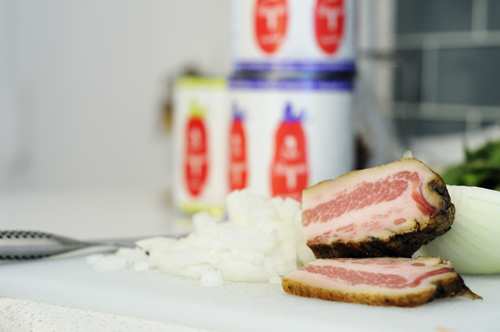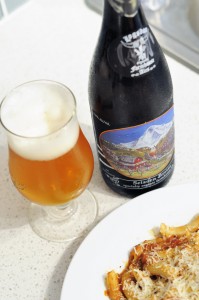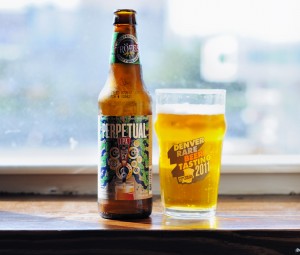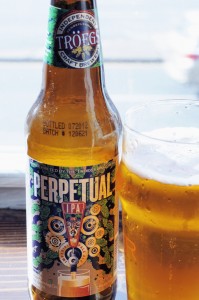Sierra Nevada Bigfoot was one of the beers that originally showed me the interesting evolution a well-crafted beer goes through as it ages. When fresh, Bigfoot is brash and hoppy, making no excuses for its intense bitterness, citrusy hops, and big alcohol. As it ages, the hops become more integrated and nuanced while allowing the complex malt to sing. The interplay of slow micro-oxidation with the malt and alcohol begins to create wonderful fruit and sherry-like notes that turn this beer into something very different than its fresh self. Straight off the packaging line, or with a couple years age, this is a delicious beer. Drink some fresh, but stash away a few to drink slowly and see what time can do to a well-crafted beer such as this.
Availability: Winter
Bottled: 2010
Alcohol: 9.6% ABV
Commercial Description from Website:
Our award-winning barleywine boasts a dense, fruity bouquet, an intense flavor palate and a deep reddish-brown color. Its big maltiness is superbly balanced by a wonderfully bittersweet hoppiness.
Tasting Notes:
Aroma: Big rich malt hits you first–reminiscent of thick dark caramel, molasses, biscuits, and toasted bread crust. There is a lot of fruit in here as well: prunes, light apricot, and a hint of lychee. The aroma is heavy and complex with plenty of oxidized sherry-like notes. Very little alcohol is apparent as are a hint of piney hops. 11 / 12
Appearance: Hazy somewhat muddy brown color with some rust-like hues. Upon pouring, a tightly bubbled tan head forms that persists until the end–quite impressive for a high alcohol beer. 3 / 3
Flavor: The flavor follows the aroma with superb rich malt and sherry-like flavors. There are more hops apparent in the flavor, but they are a shadow of their former self with some pine-needle like and slightly citrusy flavors. The hops are very apparent in the firm bitterness that is present. 17 / 20
Mouth Feel: This beer has a big sticky mouth feel that finishes just on the sweet-side of dry due to the big bitterness still present in the beer. 4 / 5
Overall Impression: This beer manages to be complex in different ways at both a young and well-aged stage in its life. At either age, it is not a subtle beer. The flavors are intense, the alcohol is big, and the overall impression makes you want to sit back and take your time sipping and dissecting the layers of flavor present in the beer. This is truly the best example of an American Barley Wine that I can think of. 10 / 10
Score: 45 / 50 (Outstanding)
Note: Evaluation done according to BJCP Scoring System. This beer was reviewed as a Category 19c. American Barley Wine.

